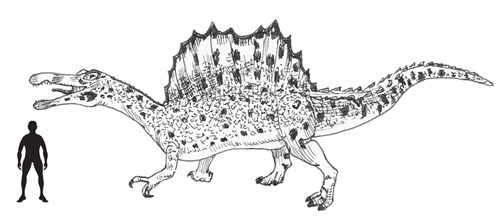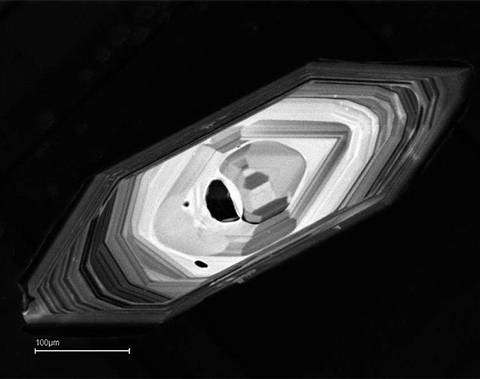Spinosaurus Drawing from Everything Dinosaur
Spinosaurus Illustration (2014)
With the imminent arrival of the new CollectA Spinosaurus replicas (1:40 Deluxe, Walking and Swimming dinosaur models), team members at Everything Dinosaur have been preparing a new illustration of this fearsome theropod dinosaur, a new Spinosaurus drawing.
An Extensive Review
Following a review of the fossil data carried out by Ibrahim et al in 2014, Spinosaurus (S. aegyptiacus) is now depicted as a quadruped (walking on all four legs). Although this view is not accepted by all palaeontologists, the writers of the academic paper (published September 2014), portrayed the dinosaur widely regarded as the largest meat-eating dinosaur known to science, as an aquatic animal very much at home in the water.
Spinosaurus Illustration by Everything Dinosaur
Picture credit: Everything Dinosaur
Much controversy surrounds this new interpretation, it certainly is a very intriguing concept, a theropod dinosaur that evolved into a quadruped and took up an niche in the swampy, equatorial environment of Cretaceous northern Africa, that of a super-sized crocodilian.
To view the CollectA Deluxe Spinosaurus at Everything Dinosaur: CollectA Deluxe Prehistoric Life.
To view the not-to-scale Spinosaurus models from CollectA: CollectA Dinosaurs.
Spinosaurus Re-boot!
The “Spinosaurus Re-boot” as it has been called, is going to be the focus of debate amongst vertebrate palaeontologists for some years to come, in the meantime, we can marvel at the new CollectA dinosaur models.
The full title of the autumn 2014 paper is “Semi-aquatic Adaptations in a Giant Predatory Dinosaur”, it was published in the academic journal “Science”.
List of authors: Nizar Ibrahim, Paul C. Sereno, Cristiano Dal Sasso, Simone Maganuco, Matteo Fabbri, David M. Martill, Samir Zouhri, Dawid A. Iurino and Nathan Myhrvold
Spinosaurus Drawing
Whatever the appearance and habits of Spinosaurus, it remains an extremely popular dinosaur amongst model collectors and dinosaur fans, peaking at number 2 in the annual Everything Dinosaur survey of the most popular prehistoric animals (2013 data). It has featured in the top ten most popular prehistoric animals list as compiled by Everything Dinosaur for many years.



